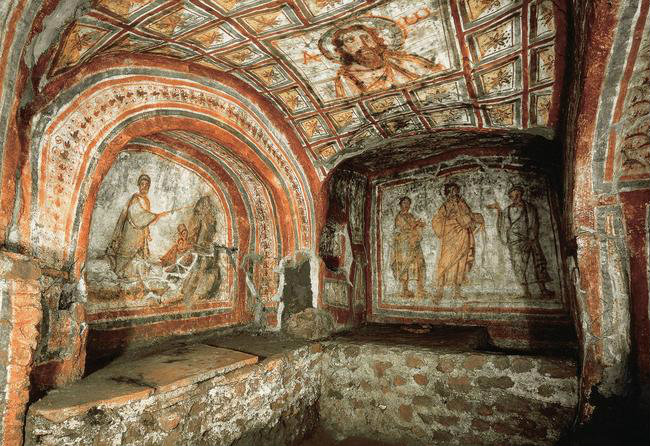Lazio "The catacombs par excellence, the first official cemetery of the community of Rome, the glorious burial ground of the Popes of the III century". Thus Giovanni Battista De Rossi, the one who discovered them in the nineteenth century, considered the founder and father of Christian Archeology, describes the catacombs of San Callisto. These catacombs from the third century AD are the official cemetery of the Church of Rome but also the oldest and best preserved of the Via Appia. The catacombs of San Callisto, which are located after the small church of "Quo Vadis, are part of the" Callistian complex ", are located in Roma. They are visited by thousands of people every year, but are not recommended for claustrophobics, as they are 12 meters underground.
The origins
Historically, the Christians of Rome buried the dead on their own land or in common cemeteries, used by pagans. For this, saints like Peter and Paul they were buried in the necropolis. Towards the first half of the second century, catacombs were built as Christians began to bury the deceased underground. Most of them took their name from the owners of the land on which they arose. The catacombs of San Callisto, which take their name from the homonymous saint, a deacon appointed by Pope Zephyrinus. Once Zephirino became pope, towards the end of the 16nd century AD he had it enlarged and built the catacombs. Dozens of martyrs, 400 popes and many Christians were buried in these catacombs. The catacombs were a pilgrimage destination for many faithful especially between 800 and XNUMX AD, and still are today.

What to see in the catacombs
In the catacombs of San Callisto there are the Crypts of Lucina and the Crypt of the Popes. Many popes were buried in the latter. Along the walls of this crypt you can see the original engravings of popes such as Pontian and Eutichiano. Also you can see the tomb of Santa Cecilia and the cubicles of the Sacraments, which contain famous frescoes representing the sacraments of baptism and the Eucharist. In addition to these regions, there are others, characterized by splendid architecture. They are those of San Gaio, Sant'Eusebio, L'Occidentale and Liberiana.

Art in the catacombs of San Callisto
In the catacombs of San Callisto there are, on the vaults and on the walls, many frescoes depicting biblical and evangelical events. There are also religious symbols that were important for the believers of the time, which Christians, not being able to freely profess their religion, used to recognize themselves. Each symbol had a different meaning and the main ones were three. The Good Shepherd with the sheep on his shoulders he represents Christ savior and the soul He saved. L'Praying: it is a symbol of the soul that already lives in divine peace and the Fish, emblem of the Christian faith which literally means Jesus Christ, Son of God the Savior.






